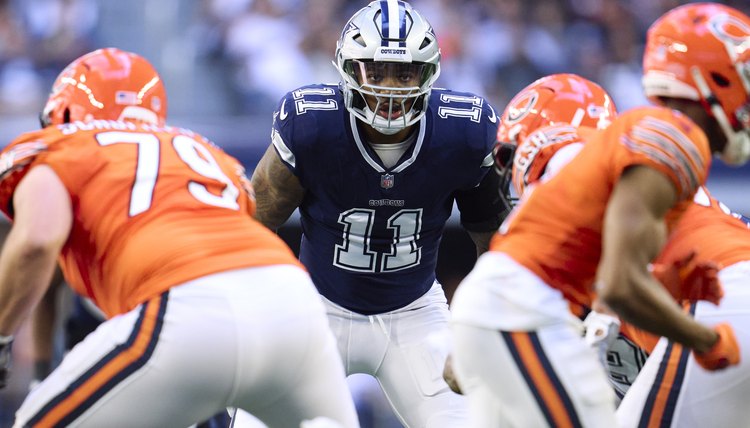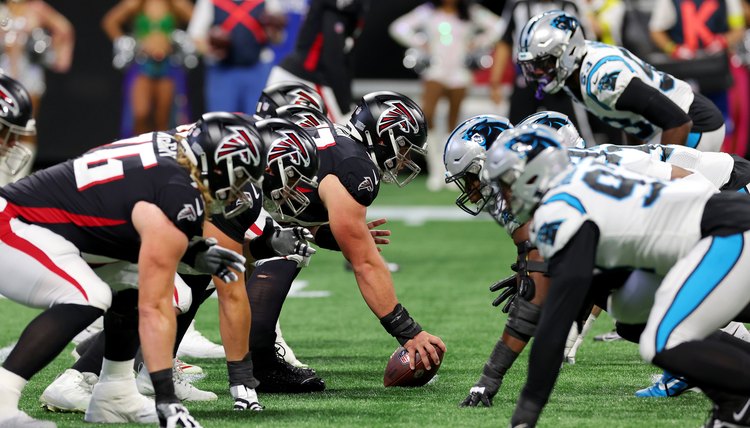How to Run a Football Defense: 5-3

In any defensive playbook, the basic 5-3 defense features five defensive linemen and three linebackers, with the remaining three players lining up as defensive backs.
Traditionally, the 5-3 defense was used in the NFL and college ranks when offensive formations and play calls were far less sophisticated; however, as the passing game has improved dramatically at these levels, football coaches more often turn to zone coverages and different forms of pass coverages to limit opposing football teams.
With that being said, the 5-3 defense still remains a great high school and youth football defense because most offensive schemes revolve around running the ball within the line of scrimmage at those ages.
On The Line
With five down defensive linemen, the 5-3 defense is extremely effective against various blocking schemes in the offense’s run-game because there are defensive linemen lining up over several different gaps in the offensive line.
- The nose guard, or nose tackle, lines up against the opposing center, and attacks the A-Gap on either side of the center
- The defensive tackles line up on either side of the nose guard against the offensive guards, and their job is to attack and fill the B-Gap
- The two defensive ends spread out wide along the defensive line, usually just outside of the offensive tackles or tight ends, and attack and fill the C-Gap
A key benefit of the extra lineman in the 5-3 defense is that it limits any obvious vulnerabilities in the running game. The two tackles guard against inside handoffs or off-tackle plays, while the ends protect against a sweep, and the nose tackle clogs the middle.
Role of the Linebackers
The three linebackers set up in a traditional format, with the middle linebacker behind the nose guard and the other two behind the defensive ends. As in other formations, the linebackers' main task against the run is to shoot the gap and make the tackle.
The 5-3, however, is designed to make that easier because each offensive lineman is being engaged by someone on the defensive line, with no blockers free to focus on the linebackers.
Ideally, a 5-3 linebacker should have a clear view and a straight path to the ball carrier, with only a fullback to worry about.

In the Secondary
The two cornerbacks in a 5-3 are among the most critical players on the field. Because there's no strong side help behind them on the outside, they have to be excellent in man-to-man coverage and solid tacklers as well.
The single free safety generally lines up behind the middle linebacker and is focused on preventing big plays, which means there's little chance of avoiding disaster by the sidelines if a corner gets beat or whiffs on a hit.
At higher levels of football where passing games become more dependable, a 5-3 defense might ask its corners to play a few yards off the receivers, sacrificing short gains rather than playing bump-and-run and risking bigger plays.
Stunts and Blitzes
The 5-3 defense allows coaches to get creative in attacking the backfield. Traditionally, this attacking flexibility comes from the linebackers and ends, with the tackles and nose guard focusing on keeping the middle of the field secure.
One approach is to line up both ends a yard outside the last offensive lineman and have both blitz on the snap, with the inside and outside linebackers shifting to guard the line against a sweep. Another is to have all five defensive lineman engage their offensive counterpart and push straight ahead, while all three linebackers immediately shoot the gap rather than waiting to read the play.
Against the Pass
The basic 5-3 defense is vulnerable against a strong passing attack. When the quarterback drops back to pass, the linebackers have to have their head up, recognize it quickly, and drop into coverage, as the lack of a second safety means a pass in the flat can turn into a big gain if they guess wrong.
The inside and outside linebackers also can split out quickly to guard the wideouts against short passes. In the latter scenario, the cornerbacks drop back, and the safety guards against the deep ball. When facing a spread offense, the defensive ends can drop into coverage, effectively shifting the formation to a 3-3-5.
